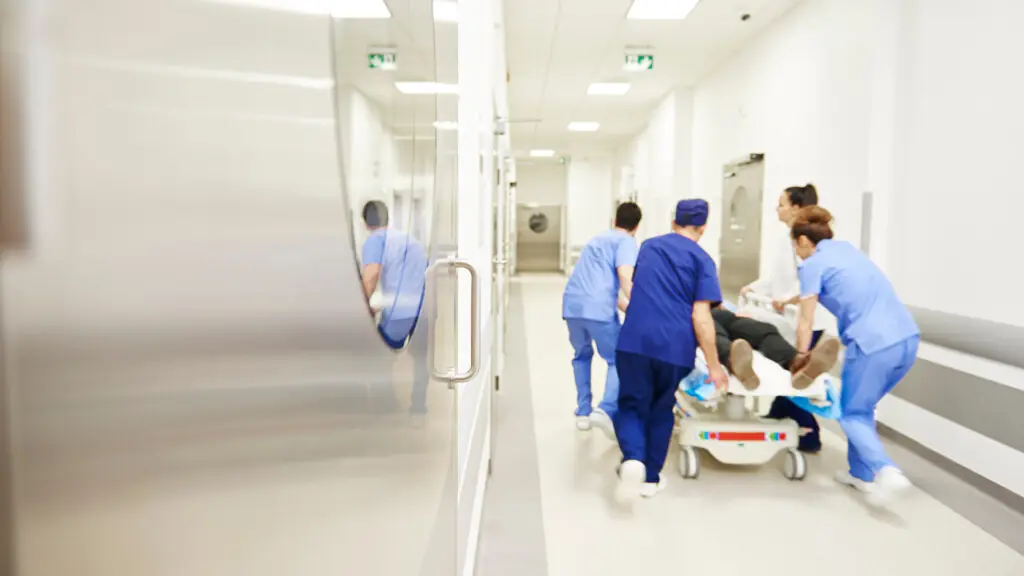In the first of a two-part interview, the chief executive of NHS Resolution explains why the organisation focuses as much on learning and prevention as on litigation and claims.
Helen Vernon has been chief executive of NHS Resolution since 2014. In the first of a two-part interview and ahead of its 30th anniversary later this year, she talks with Healthcare Today about how the ‘arm’s-length body of the Department of Health and Social Care’ has changed, what her measures of success are and the cost of clinical negligence claims.
“We’ve made a concerted effort to encourage the wider market to adopt alternative ways of resolving cases.”
Since you became chief executive in 2014, how has NHS Resolution changed and evolved?
Around 30 years ago, we were originally established to manage claims for the NHS in a consistent way. At the time, new types of legal actions were emerging which didn’t necessarily centre on one particular organisation, and there was growing concern about precedent being set in the courts without a coordinated approach.
We were also created to risk-pool liabilities – to protect individual NHS organisations from large financial shocks that could otherwise destabilise them, both financially and operationally. The idea was that by pooling risk, organisations could continue improving safety and performance without the fear of catastrophic claims undermining their stability. This also allowed us to deliver economies of scale – in other words, better quality service and better value for the NHS overall.
Over time, we developed a deep specialism in this area. When I became chief executive, the NHS Litigation Authority (as we were then known) had two decades of experience in handling clinical negligence claims. Each time we went through an Arms-Length Body review, we tended to take on new functions and extend our remit. At that stage, we were seen as quite specialist – even niche – and in some ways more aligned with the justice system than with the health service itself.
By then, we had accumulated not only 20 years of expertise, but also 20 years of data – an extraordinary resource that held huge potential, though we were still only at the beginning of understanding how best to use it. That dataset is unique internationally: we are the only health indemnifier to cover an entire national jurisdiction. In most other countries, multiple insurers operate across different states or cover only certain risks.
When I took up the role, it was the right moment for a strategic shift – a chance to set a new direction. Alongside that came the decision to change our name from the NHS Litigation Authority to NHS Resolution. The name change was both symbolic and practical: it better represented what we did and where we were heading.
Our strategic direction since then has been about moving further upstream – becoming less of a niche, back-office function and more embedded in the mainstream health system. That has meant being more outward-facing, working in partnership with organisations such as the Royal Colleges, and using our rich data – now spanning three decades – to derive insights that help improve patient safety.
We’ve also fundamentally changed how claims are handled. While we can’t alter the legal framework we operate within, we can change our approach to resolution. We’ve made a concerted effort to encourage the wider market to adopt alternative ways of resolving cases – keeping them out of court and focusing on more than just financial compensation. It’s about resolving healthcare claims in ways that are fair, proportionate, and that ultimately help improve care.

How has the culture at NHS Resolution changed since you started?
The workforce has changed enormously – not only in the types of people we employ, but also in how we go about our work. One of the biggest shifts we’ve made has been to bring clinicians in-house, largely on secondment. They join us for a period of time, contribute their expertise, and then return to the NHS – ideally taking with them new insights into the world of claims and litigation, along with valuable leadership development and experience of working with a unique dataset to generate safety insights.
This approach has strengthened our clinical credibility and deepened the expertise behind our products and education services. Just as importantly, it’s helped us to build stronger connections across the NHS, creating a far more integrated and collaborative network over time.
“By improving safety, we prevent harm, reduce costs, and relieve pressure across the system.”
NHS Resolution has increasingly focused on learning and prevention as much as litigation and claims. How have you maintained that balance, particularly amid financial pressures and workforce strain across the NHS?
In our world, the two are inseparable. Every incident or claim we deal with represents someone who has had a poor experience within the NHS. Whether or not they’ve been negligently harmed is, of course, what we investigate – but by the time a patient approaches a lawyer and brings a compensation claim, it’s clear that their experience has already gone well beyond a complaint or a concern raised at the bedside.
Where claims are settled, they often involve significant costs, because these are people who have been seriously harmed and frequently have lifelong needs. As you’ll have seen, most of our expenditure relates to the most severe and complex cases.
The two issues – safety and cost – are therefore closely linked. The more we can do to prevent such incidents from occurring in the first place, the more we can reduce both the financial pressures on the NHS and the emotional burden on staff, who should be focusing their energy on patient care rather than on investigating or supporting compensation claims. Ideally, it should create a virtuous circle: by improving safety, we prevent harm, reduce costs, and relieve pressure across the system. As the National Audit Office recently recognised, that’s one of the most important challenges ahead.

How do you measure success now – both in terms of claims outcomes and the impact on patient safety and system learning?
That’s a really important question, and of course, it’s one that’s much bigger than us – we don’t operate in isolation. Any contribution we make to improving safety has an impact well beyond the claims that come across our desks, because those cases are just the tip of the iceberg. The real effect should be felt in better care and safer outcomes, which in turn means fewer incidents overall.
You can see that reflected in some of the broader measures published by NHS England, such as incident data, which are highly relevant here. We’ve also done work with the Getting It Right First Time (GIRFT) programme, which produces dashboards for the NHS that include claims data provided by us. I co-authored the guidance on litigation with Tim Briggs, and those dashboards show claims data alongside a range of other NHS metrics. That allows trusts to see not only how they compare on, say, orthopaedic claims, but also how that aligns with activity levels and other indicators.
For me, that’s one of the most interesting and useful ways of assessing progress. It’s not perfect, but it probably attracts more engagement and interest from the NHS frontline than almost anything else.
“For every case that doesn’t go to litigation, we save around £100,000 in legal costs.”
As we saw again last week, the cost of clinical negligence remains a major issue. What practical levers exist to bring these costs under control? What changes would you most like to see in law or policy?
We completely agree with everything the National Audit Office (NAO) said on the subject. It’s a rigorous and excellent analysis, with exactly the right conclusions. The issue, as you’ll have seen from the report, is incredibly complex and multifaceted. There’s no single solution – no silver bullet – but the starting point has to be preventing incidents from happening in the first place. We absolutely share the NAO’s view on that. The cases we see are, as I’ve said, just the tip of the iceberg, and that doesn’t begin to reflect the lifelong consequences for the patients and families involved.
Maternity is a major area of focus for us because it represents such a significant proportion of total costs, even though it involves a relatively small number of very severe cases. That’s why maternity is one of our strategic priorities and why we established the Maternity Incentive Scheme. It’s also why we changed the way cerebral palsy cases are handled, introducing the Early Notification Scheme. We’ve put a huge amount of energy into that work.
When it comes to broader policy solutions, those are not for us to determine – that’s a matter for the Department of Health and Social Care. They’re currently receiving expert advice on the subject from David Lock KC, but we contribute by sharing our insights and expertise to help inform that process. We also work closely with other jurisdictions that have faced similar challenges, and we exchange knowledge about what has and hasn’t worked elsewhere.
It’s a complex picture – partly about safety, partly about the legal system. Within our remit, we’re doing everything possible to reduce the need for litigation. Keeping cases out of court brings multiple benefits, including financial ones. For every case that doesn’t go to litigation, we save around £100,000 in legal costs. That in itself helps to move the dial on those frictional costs that don’t go to patients as damages.



